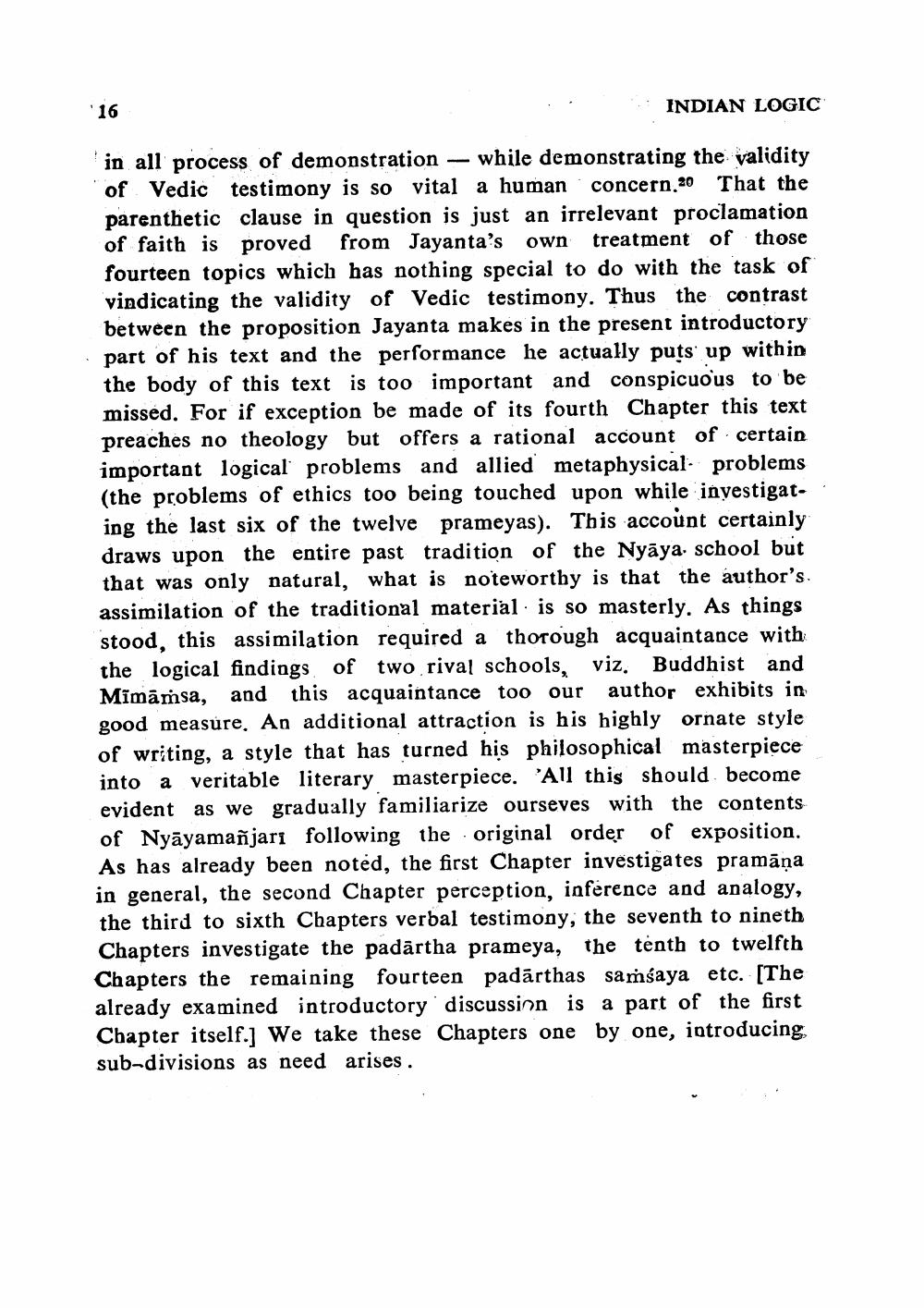________________
16
INDIAN LOGIC
in all process of demonstration – while demonstrating the validity of Vedic testimony is so vital a human concern.20 That the parenthetic clause in question is just an irrelevant proclamation of faith is proved from Jayanta's own treatment of those fourteen topics which has nothing special to do with the task of vindicating the validity of Vedic testimony. Thus the contrast between the proposition Jayanta makes in the present introductory part of his text and the performance he actually puts up within the body of this text is too important and conspicuous to be missed. For if exception be made of its fourth Chapter this text preaches no theology but offers a rational account of certain important logical problems and allied metaphysical problem (the problems of ethics too being touched upon while investigat. ing the last six of the twelve prameyas). This account certainly draws upon the entire past tradition of the Nyāya school but that was only natural, what is noteworthy is that the author's. assimilation of the traditional material is so masterly. As things stood, this assimilation required a thorough acquaintance with the logical findings of two rival schools, viz. Buddhist and Mimamsa, and this acquaintance too our author exhibits in good measure. An additional attraction is his highly ornate style of writing, a style that has turned his philosophical masterpiece into a veritable literary masterpiece. 'All this should become evident as we gradually familiarize ourseves with the contents of Nyāyamañjari following the original order of exposition. As has already been noted, the first Chapter investigates pramāna in general, the second Chapter perception, inference and analogy, the third to sixth Chapters verbal testimony, the seventh to nineth Chapters investigate the padārtha prameya, the tenth to twelfth Chapters the remaining fourteen padārthas samsaya etc. [The already examined introductory discussion is a part of the first Chapter itself.] We take these Chapters one by one, introducing sub-divisions as need arises.




